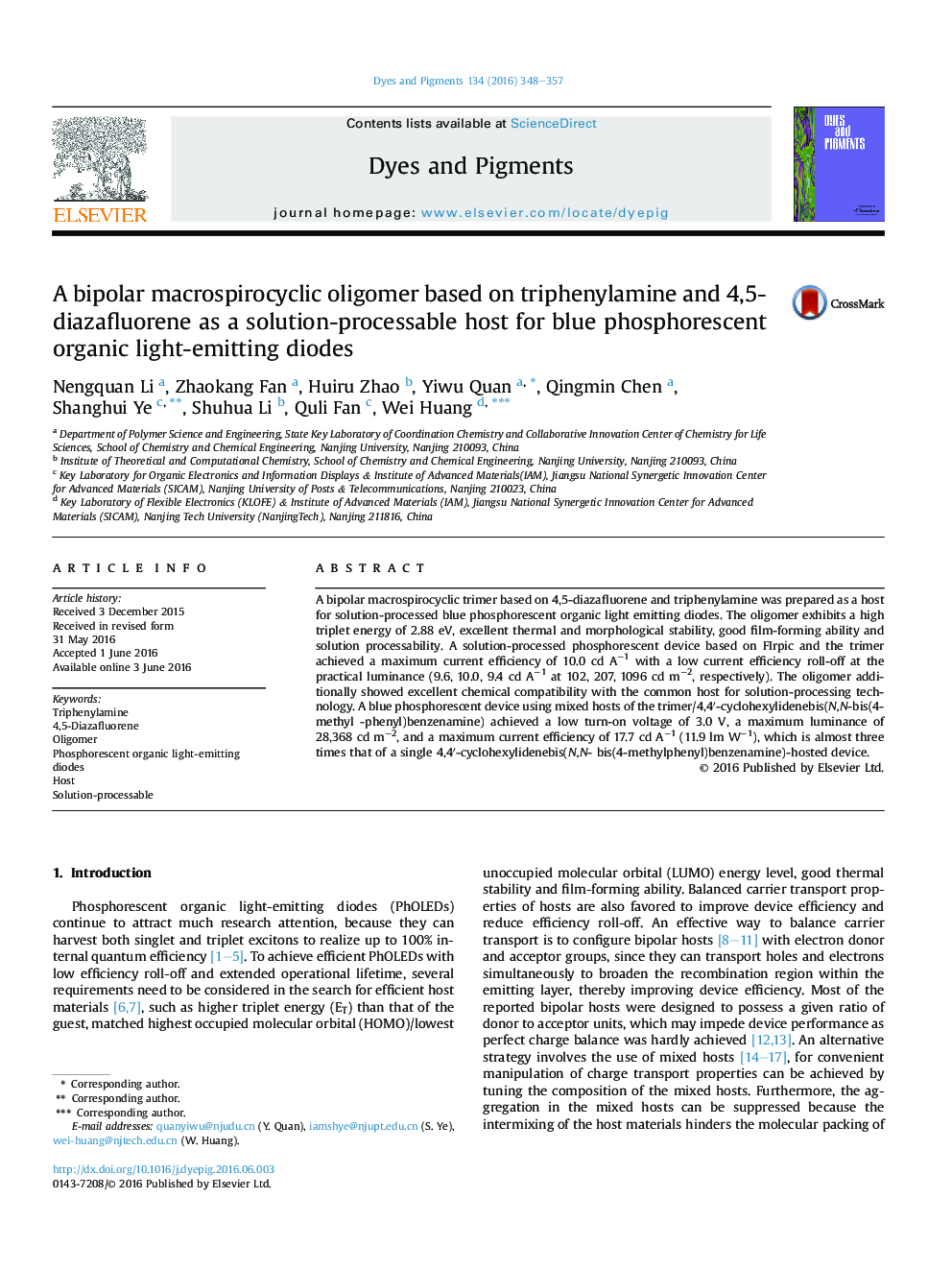| Article ID | Journal | Published Year | Pages | File Type |
|---|---|---|---|---|
| 175269 | Dyes and Pigments | 2016 | 10 Pages |
•A bipolar macrospirocyclic oligomer was prepared through a simple reaction.•Good doping compatibility, excellent thermal stability and high triplet energy 2.88 eV.•Solution processed device exhibits two-fold of improvement in luminous efficiency.
A bipolar macrospirocyclic trimer based on 4,5-diazafluorene and triphenylamine was prepared as a host for solution-processed blue phosphorescent organic light emitting diodes. The oligomer exhibits a high triplet energy of 2.88 eV, excellent thermal and morphological stability, good film-forming ability and solution processability. A solution-processed phosphorescent device based on FIrpic and the trimer achieved a maximum current efficiency of 10.0 cd A−1 with a low current efficiency roll-off at the practical luminance (9.6, 10.0, 9.4 cd A−1 at 102, 207, 1096 cd m−2, respectively). The oligomer additionally showed excellent chemical compatibility with the common host for solution-processing technology. A blue phosphorescent device using mixed hosts of the trimer/4,4′-cyclohexylidenebis(N,N-bis(4-methyl -phenyl)benzenamine) achieved a low turn-on voltage of 3.0 V, a maximum luminance of 28,368 cd m−2, and a maximum current efficiency of 17.7 cd A−1 (11.9 lm W−1), which is almost three times that of a single 4,4′-cyclohexylidenebis(N,N- bis(4-methylphenyl)benzenamine)-hosted device.
